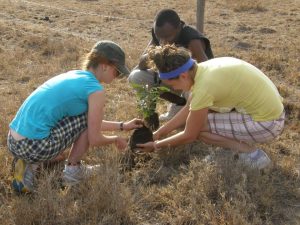Reading Log Week 7: Gold Rush is More than Gold
Mica, Jorgenson, “Into That Country to Work,” Aboriginal Economic Activities during Barkerville’s Gold Rush: 109-135.
Primary Documents: “BC Gold Rushes” from Thomas Thorner and Thor Frohn-Nielsen (Eds.), A Few Acres of Snow: Documents in Pre-Confederation Canadian History (3rd Edition), Toronto: University of Toronto Press, 2009: 232-253.
In Mica Jorgenson’s article “Into That Country to Work”[1] there is a stress on Indigenous people’s roles during the British Columbian Gold Rush in Barkerville. At this time Barkerville became “the major economic hub of the central interior of British Columbia,”[2] but laid on traditional territory of the Dakleh (Carrier) peoples. The peculiar statement that was made by Jorgenson was that “Barkerville has long been subject to the myth that no First Nations lived or worked there.”[3] It is not a secret that Indigenous peoples were stripped the rights of their land in historical periods of time, but during the Gold Rush there was no reference to the whites taking the Dakleh’s land.
There was a sense of isolation among the Dakleh peoples– they practically gave up their land and showed that they did not want to participate in the thriving Gold Rush, “…effort to prevent the gold rush. Hoping to keep their pristine lake community (Bowron Lake) from being settled and mined by invaders.”[4] The Dakleh peoples clearly had unfavorable feelings towards the gold rush, but was this event preventable? Even if the dominating white settlers received permission of the Dakleh peoples settlers still would have come to participate; unless the Dakleh took extreme conditions to prevent it, which they were doing anyways “the account goes- murdered a white man who had come down Antler Creek.”[5] Although the Dakleh peoples were not participating in the Gold Rush, they still played important roles by packing, cattle-driving, berry picking, letter carrying, laundry servicing, and selling salmon. Jorgenson also states they played an important role in prostitution, and then identifies that some scholars “do not even acknowledge Aboriginal people at all.”[6]
There seems to be an identity problem within the article; we are never fully aware if Jorgenson is on side with the Indigenous peoples of the time or if she sees them as foolish. She presents them a minority who stuck to the outskirts and were rarely recognized by the people of the era– as well as scholars.
The primary sources within “BC Gold Rushes”[7] presents a feeling of negativity towards the Gold Rush in British Columbia. This chapter presents a predominantly first person point of view and the notes within give the reading a more personal feel, thus making it easier to follow and understand. We are drawn into the actual life of men who endured the hardships during this time; their experiences opening eyes to situations otherwise unknown.
In the article “To the Editor of the Islander” we are given the experience of a man who endured mining in San Francisco as well as Barkerville. Barkerville seems to be the only gold mine that is well known, but during this time San Francisco was also a popular place to be. This miner speaks of his experiences stating that it was dangerous to gold mine in San Fransisco, but it was “where (he) found the excitement even more intense than in the mountains.”[8] The gold rush attracted all sorts of people– this is most likely because being a “gold seeker(s) required neither skills nor capital.”[9] The Gold Rush was a time of prosperity, but the prosperity did not come without hardship. At this time provisions prices heightened and men were making low wages; many living on three to five dollars a day and consuming only bread and water, “they had nothing to eat for one week, and not a cent in money. This is gold mining for you!”[10] A miner stated “do not think I have taken dislike to the country because I am not making money, the dislike is all over the country.” This man is very honest in his note, putting forward that British Columbia “can never be a place because there is nothing to support it, except the mines, which are slowly going down as well.”[11] The times of prosperity did not last forever and for all the miners who made the trip to take part in the ‘prosperity’ were confronted with a rude awakening when the labour and hours increased and pay decreased.
Canada and America did thrive from the Gold Rush, but real stories of miners are not often shown, and after reading this it is no surprise. The only confusing part of this reading was the switch between American and Canadian referencing to gold mining. The mapping of the colonies in that era was not the same as today, so throughout the reading it difficult to determine the areas referenced.
[1]Mica, Jorgenson, “Into That Country to Work,” Aboriginal Economic Activities during Barkerville’s Gold Rush: 109-135.
[2] Jorgenson, “Into That Country to Work,” 109.
[3] Jorgenson, “Into That Country to Work,” 109.
[4] Jorgenson, “Into That Country to Work,” 117.
[5] Jorgenson, “Into That Country to Work,” 117.
[6] Jorgenson, “Into That Country to Work,” 112.
[7] Primary Documents: “BC Gold Rushes” from Thomas Thorner and Thor Frohn-Nielsen (Eds.), A Few Acres of Snow: Documents in Pre-Confederation Canadian History (3rd Edition), Toronto: University of Toronto Press, 2009: 232-253.
[8] Primary Documents: “To The Editor of the Islander” 235.
[9] Ibid. 233.
[10] Primary Documents: “News From British Columbia,” 238.
[11] Ibid. 237.
